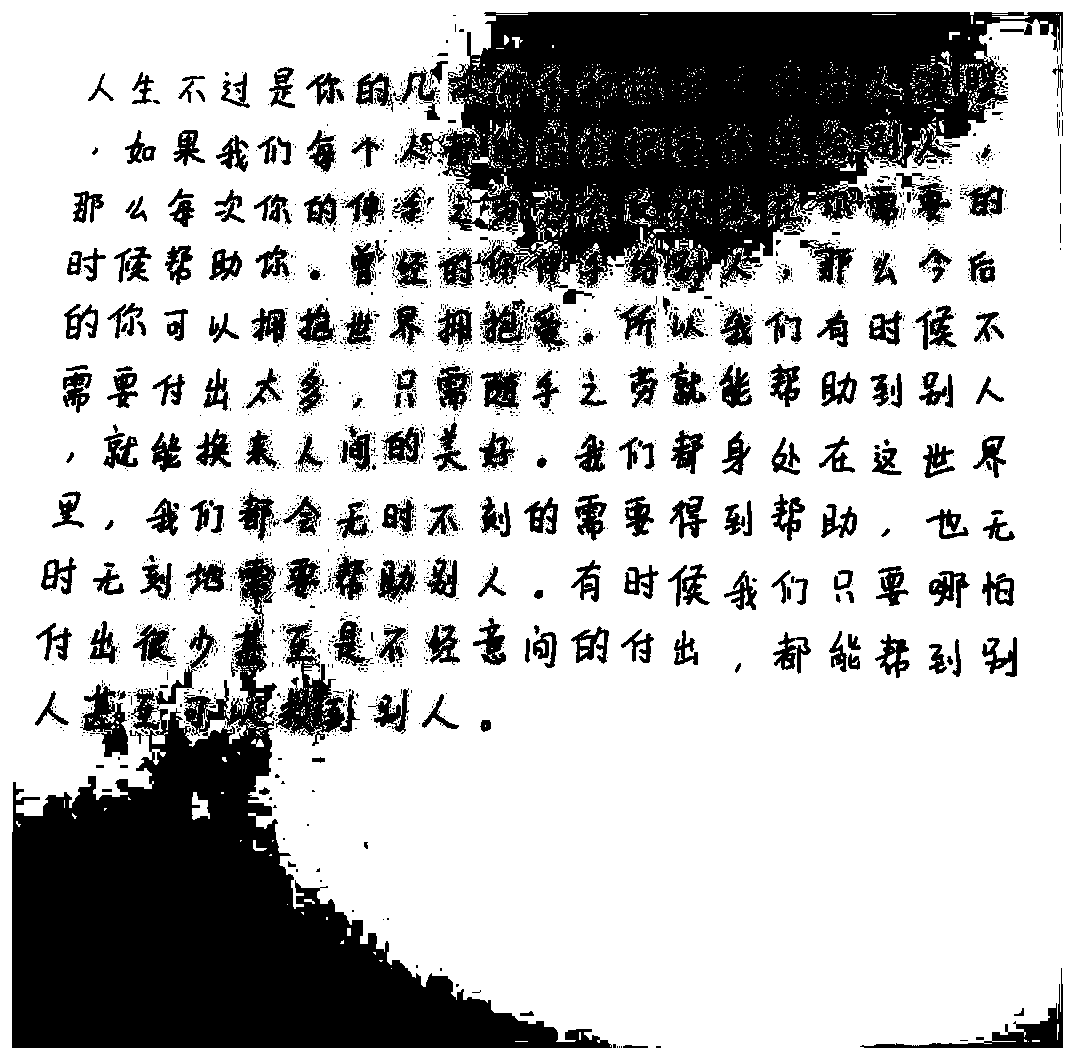CNN-based handwritten Chinese text recognition method
A text recognition and Chinese technology, applied in character and pattern recognition, instruments, computer parts, etc., can solve the problems of low recognition accuracy and achieve high accuracy
- Summary
- Abstract
- Description
- Claims
- Application Information
AI Technical Summary
Problems solved by technology
Method used
Image
Examples
Embodiment 1
[0040] The embodiment of the present invention provides a CNN-based handwritten Chinese text recognition method, see figure 1 , the method includes the following steps:
[0041] 101: Grayscale and binarize text images, and then use histogram projection [5,6] Segment Chinese text; first segment a single line of text by horizontal scanning, and then segment a single text by vertical scanning;
[0042] 102: Scan and process a single Chinese image, perform orthorectification on the Chinese, and place it in the middle of the image, leaving 10 blank pixels at the top, bottom, left, and right;
[0043] 103: Construct a convolutional neural network, use the training set for training; input the picture to be tested, and use the constructed convolutional neural network for recognition.
[0044] Wherein, the embodiment of the present invention is based on the TensorFlow framework [7] (This framework is known to those skilled in the art) Construct a convolutional neural network, this c...
Embodiment 2
[0061] The scheme in embodiment 1 is further introduced below in conjunction with specific calculation formulas and examples, see the following description for details:
[0062] 201: Binarize the image, project the binarized image in the horizontal direction, calculate pixels, and obtain a projection curve in the horizontal direction;
[0063] Among them, some zero values in the projection curve represent blank areas between text lines, and the text image is segmented with the zero-value central horizontal line to extract each line of text.
[0064] 202: Using the projection curve in the horizontal direction obtained in step 201 to cut the binarized image into rows, and then projecting each row of images in the vertical direction to obtain a projection curve in the vertical direction;
[0065] During the specific implementation, since there may be continuous strokes between the handwritten characters, the projection curve in the vertical direction is often not zero between t...
Embodiment 3
[0105] Combine below Figure 2-Figure 7 , Table 1 and Table 2 carry out feasibility verification to the scheme in embodiment 1 and 2, see the following description for details:
[0106] 301: The embodiment of the present invention uses the softmax cross-entropy function to calculate the loss function, compares the output value of the previous layer with the input real label, calculates the loss and normalizes it to a probability value, and then calculates the mean value; uses the argmax function to find The predicted label is compared with the input real label to calculate the average prediction accuracy rate; dynamically adjust the learning rate, the initial learning rate is set to 0.0002, the number of steps per iteration is 2000, and the attenuation ratio is 0.97. The adamOptimizer optimization algorithm is used to facilitate the dynamic adjustment of parameters.
[0107] 302: First use the constructed convolutional neural network to train and test the HWDB data set, and o...
PUM
 Login to View More
Login to View More Abstract
Description
Claims
Application Information
 Login to View More
Login to View More - R&D
- Intellectual Property
- Life Sciences
- Materials
- Tech Scout
- Unparalleled Data Quality
- Higher Quality Content
- 60% Fewer Hallucinations
Browse by: Latest US Patents, China's latest patents, Technical Efficacy Thesaurus, Application Domain, Technology Topic, Popular Technical Reports.
© 2025 PatSnap. All rights reserved.Legal|Privacy policy|Modern Slavery Act Transparency Statement|Sitemap|About US| Contact US: help@patsnap.com



